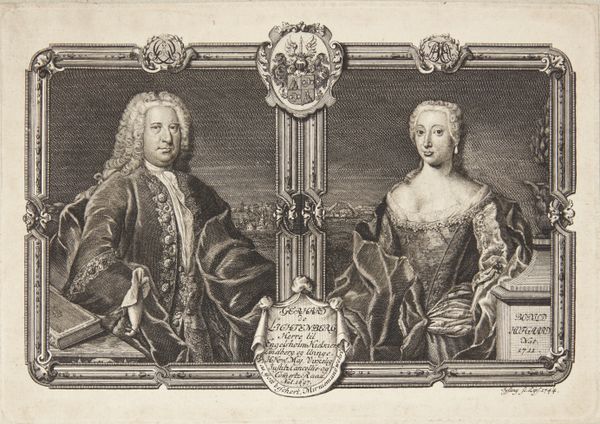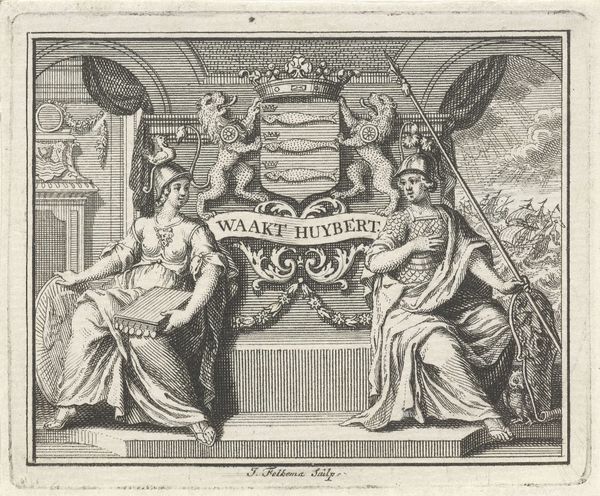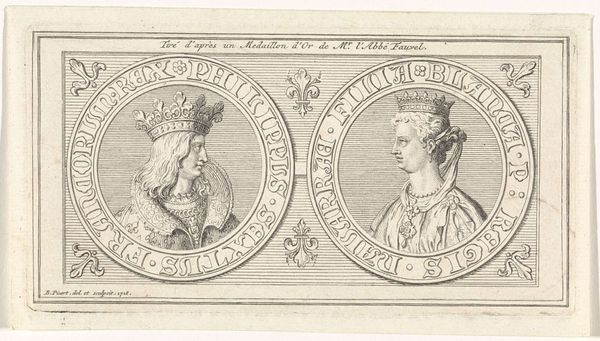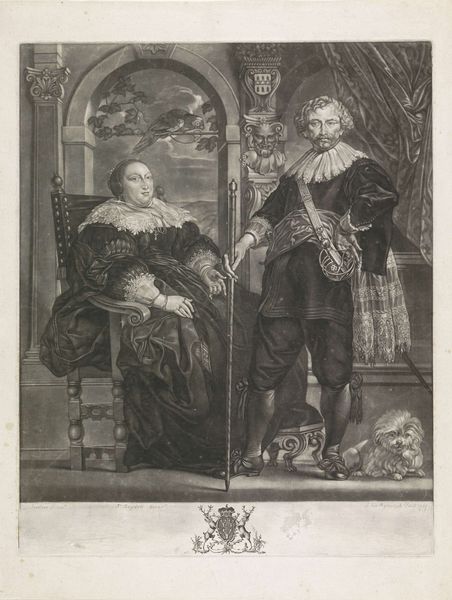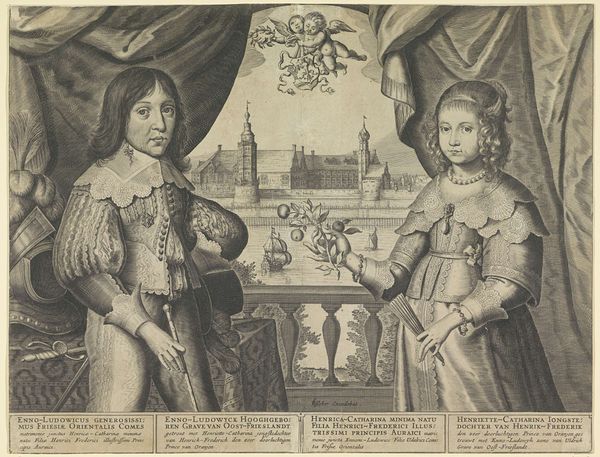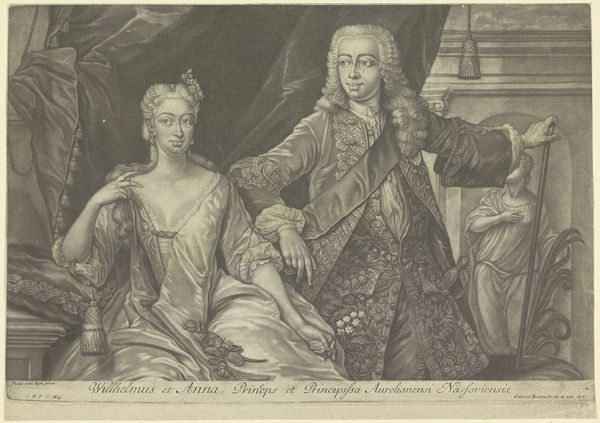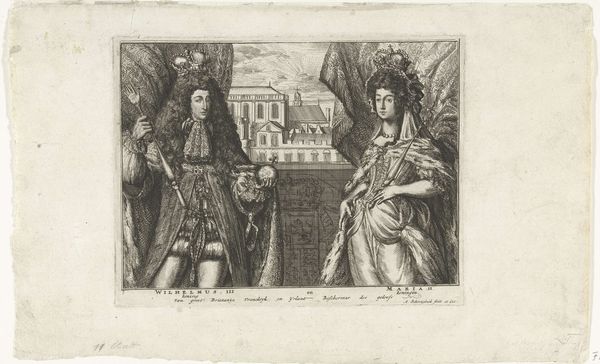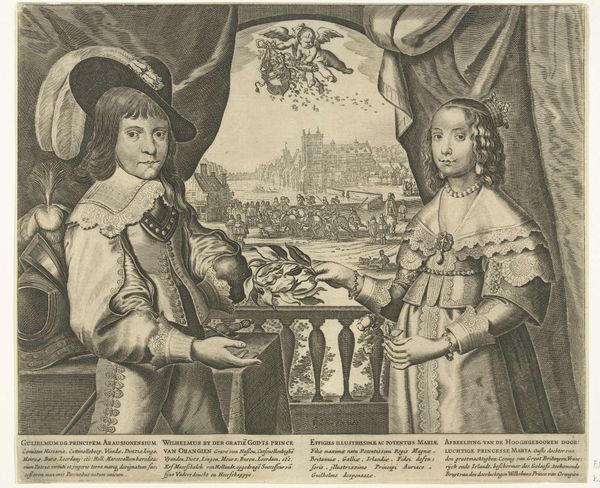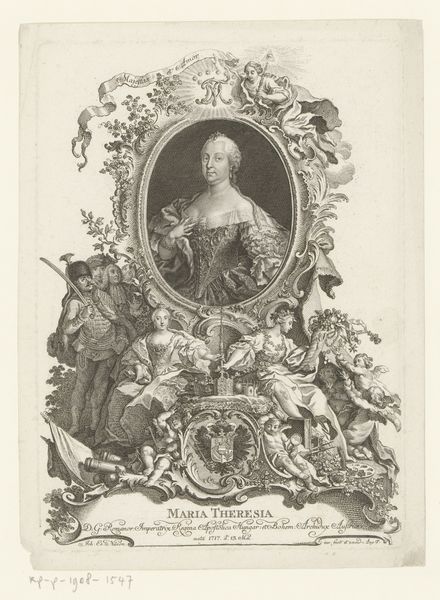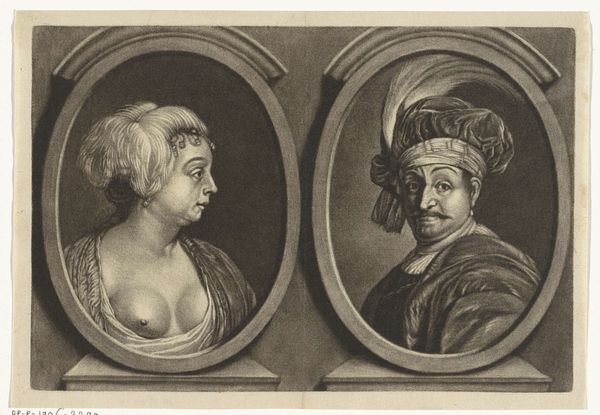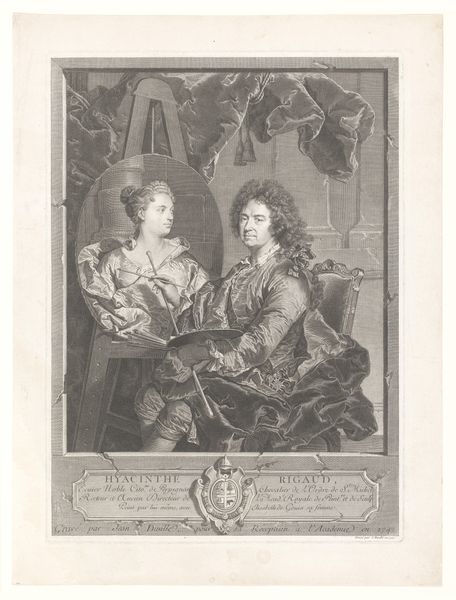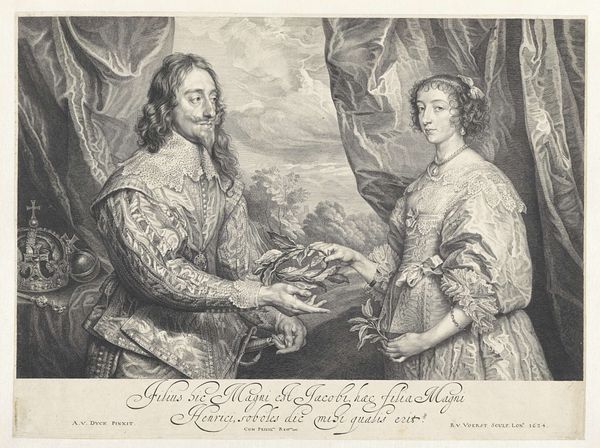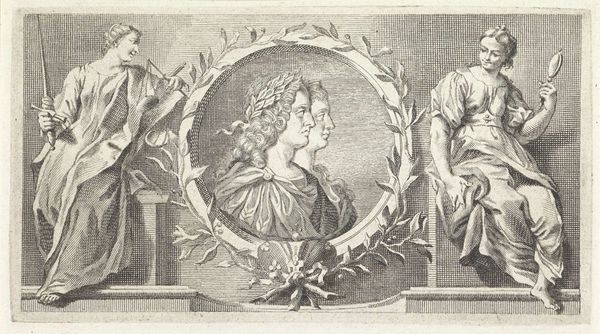
Portretten van Willem IV, prins van Oranje-Nassau, en Anna van Hannover 1747 - 1799
0:00
0:00
Dimensions: height 111 mm, width 194 mm
Copyright: Rijks Museum: Open Domain
Editor: So, this is a print titled "Portretten van Willem IV, prins van Oranje-Nassau, en Anna van Hannover" by T. Jefferys, dating from the late 18th century. The level of detail the artist achieves is striking. What jumps out at you when you look at this work? Curator: It is indeed detailed, but the formality of the composition is even more telling. Prints like these, particularly portraits of royalty, served a distinct public function. They weren't simply artistic expressions but tools for disseminating an image of power and legitimacy. Notice the text surrounding each portrait? How does the framing affect our reading of these portraits? Editor: Well, it certainly emphasizes their status. The text literally spells out their titles, and the decorative frames feel quite regal, with heraldic symbols at the base. The frames almost force me to read these as symbols more than individuals. Curator: Exactly. Consider the context. William IV became Stadholder after a period of instability. This print, part of a broader visual culture, reinforces his and Anna’s authority, projecting an image of stability and inherited right through its classical references and structured design. Prints could be reproduced and distributed widely, thereby making elite likenesses newly accessible. Editor: So, it’s almost propaganda? Is it trying to create a specific narrative, solidifying their rule by presenting them in a particular light? Curator: In a way, yes, though “image management” might be a more apt term for the eighteenth century. These images play into established notions of monarchy. And look at the similarities in their pose. Do these images tell a particular story, or project a vision of dynastic stability? Editor: That makes perfect sense. I’ve always seen portraits as individual representations, but now I realize they can also be powerful tools within a broader social and political landscape. Curator: Precisely! The image isn't just *of* them, but about their power and how it was maintained. Understanding the context gives this seemingly straightforward portrait much deeper meaning.
Comments
No comments
Be the first to comment and join the conversation on the ultimate creative platform.
